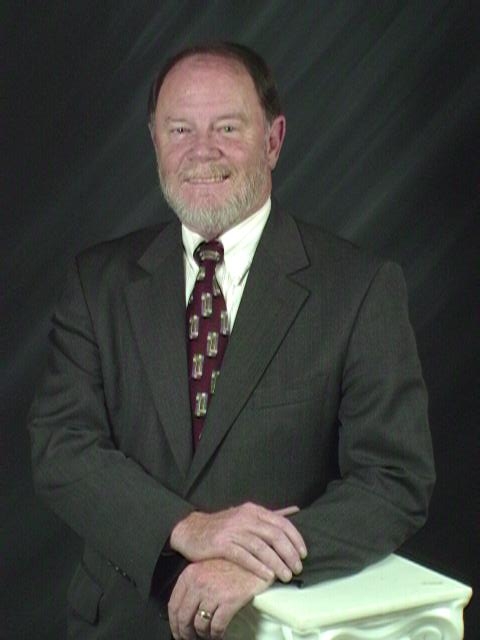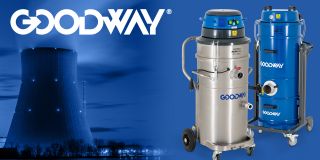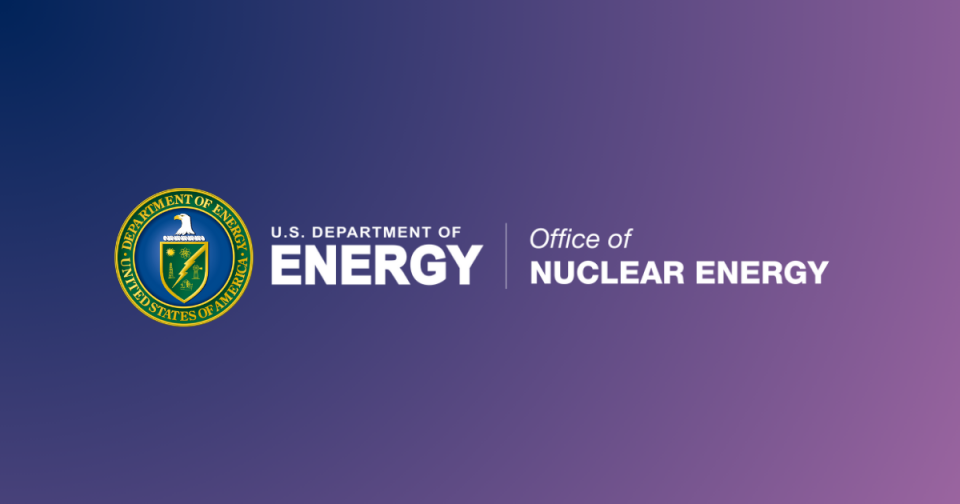ANS publishes white papers on small modular reactors

A six-pack of small reactors can be developed over time to meet a utility's growing needs.
The papers are the result of technical dialogs on generic licensing issues
On September 3, 2010, the American Nuclear Society in a statement posted on its Web site said it has released the report of the President's Special Committee on Small and Medium Sized Reactor (SMR) Licensing Issues.
The organization said, "The Society has taken a leadership role in addressing the SMR licensing issues because the licensing and eventual deployment of SMRs will lead to:
- Job creation Export of U.S. goods and services
- Benefits to national security and energy policy
- Reductions in greenhouse gas emissions."
The SMR report is available at the ANS Web site by clicking here (large PDF file).
 ANS Immediate Past President Tom Sanders (left) established the 'ANS President's Special Committee' earlier this year. Sanders directed the group to develop solutions that are technology neutral for SMR generic licensing issues. In addition to the eight papers released in September, the Committee is writing another six papers that it will complete by November.
ANS Immediate Past President Tom Sanders (left) established the 'ANS President's Special Committee' earlier this year. Sanders directed the group to develop solutions that are technology neutral for SMR generic licensing issues. In addition to the eight papers released in September, the Committee is writing another six papers that it will complete by November.
While ANS is not directly engaging with the Nuclear Regulatory Commission on licensing issues, it has provided its white papers to the agency and to the Nuclear Energy Institute (NEI). Sanders briefed NRC Chairman Jaczko on the papers earlier this year and on the role of ANS. Sanders said in the ANS statement:
"The SMR Special Committee led the nuclear science and engineering community in organizing a forum for technical dialogue on SMR licensing issues."
Highlights of two papers
 Committee Co-chair Philip Moor said that two of the papers highlight some of the issues being tackled in all eight of them. These two are the papers on reactor fees, which reimburse the NRC for the fixed annual portion of its regulatory costs, and on manufacturing licenses.
Committee Co-chair Philip Moor said that two of the papers highlight some of the issues being tackled in all eight of them. These two are the papers on reactor fees, which reimburse the NRC for the fixed annual portion of its regulatory costs, and on manufacturing licenses.
A clear trend emerges in the conclusions and recommendation of the completed white papers, namely that the current U.S. nuclear reactor regulations are focused on the safety and security of large light-water reactors. The ANS papers illustrate the incompatibilities of the current licensing rules with SMR designs. In general, applicants would have three possible approaches for licensing SMRs:
- Seek exemptions to current rules
- NRC rule making
- Legislative changes
Each of these approaches implies a specific time frame for implementation, and in many cases the white papers provide near-term solutions as well as long-term solutions aimed at achieving regulatory stability.
Manufacturing licenses
 Several SMR vendors plan to build factories in the United States to produce their reactors, and then assemble them on a customer's site either in this country or overseas. SMR vendors seeking to export their technologies face significant challenges in negotiating a regulatory thicket of government requirements imposed on nuclear exports from the Departments of Energy, Commerce, State, and Defense.
Several SMR vendors plan to build factories in the United States to produce their reactors, and then assemble them on a customer's site either in this country or overseas. SMR vendors seeking to export their technologies face significant challenges in negotiating a regulatory thicket of government requirements imposed on nuclear exports from the Departments of Energy, Commerce, State, and Defense.
The ANS paper calls on the NRC to clarify these requirements. One place that the NRC can start, the paper says, is to examine the way that aircraft and other high tech exports are handled by these agencies. The U.S. government has a long history of dealing with foreign ownership and control of the exported technology. There should be lessons learned from that experience that can be applied to SMRs.
The paper also analyzes some of the relationships between a manufacturing license and other NRC requirements. The paper concludes that a manufacturing license "offers an excellent vehicle" to control export of U.S. technology and expertise. In addition, it suggests that manufacturing licenses may provide superior protection of intellectual property to U.S.-based reactor designers and developers.
Reactor fees
 The fees required of a licensee of an operating nuclear facility include fixed annual assessment and reimbursement for NRC staff time. With regard to the annual fee the amounts are currently assessed in a manner similar to conventional large reactors. This paper makes a series of recommendations to recognize that size matters when it comes to annual fees. A short list of recommendations includes:
The fees required of a licensee of an operating nuclear facility include fixed annual assessment and reimbursement for NRC staff time. With regard to the annual fee the amounts are currently assessed in a manner similar to conventional large reactors. This paper makes a series of recommendations to recognize that size matters when it comes to annual fees. A short list of recommendations includes:
- Establish a sliding scale for fees based on thermal power.
- Set a maximum fee for all reactors that have less than 2000 MW thermal power.
- Ensure that the NRC is adequately funded to conduct its reviews.
- Establish a fee structure for new large and small reactors that avoids imposing inequitable costs on the existing fleet of operating reactors.
Collaborative effort The white papers are written by ANS members in a collaborative effort with NEI, the Electric Power Research Institute , the Department of Energy, and the International Atomic Energy Committee.
NEI is also preparing a series of white papers on SMR issues that are informed by the ANS effort. NEI is representing the U.S. nuclear industry through its members in a series of meetings with NRC.
ANS members on the SMR committee participate as individuals and not as representatives of the SMR vendors, government agencies, or other organizations.
_______________________________________________________
Dan Yurman publishes Idaho Samizdat, a blog about nuclear energy.




